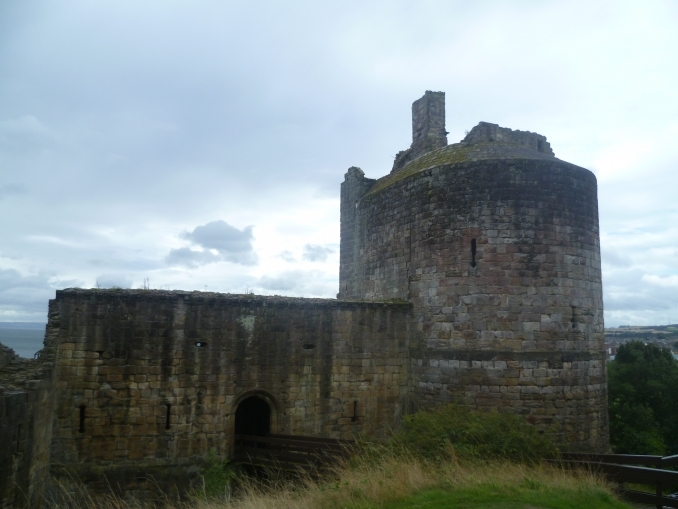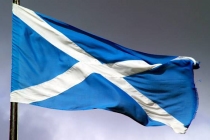Ravenscraig Castle

Ravenscraig Castle stands in a public park in the town of Kirkcaldy (Scottish Gaelic: Cair Chaladain). It is in the county of Fife (Scottish Gaelic: Fìobha). Fife is sometimes referred to as the Kingdom of Fife as it was once the Pictish Kingdom of Fib. The Picts were a Celtic people that lived in northern and eastern Scotland from the late Iron Age period.
Ravenscraig Castle was owned by the wife of James II of Scotland, Queen Mary of Guelders. James II (16 October 1430 – 3 August 1460) was just 6 years old when he became King following the assignation of his father James I in 1437. In 1449 at the age of 19 he married Mary of Guelders who was 15. The Duchy of Guelders covered an area that is in present day Netherlands and partly in Germany and the town of Geldern in North Rhine-Westphalia is where the duchy got its name.
James II was killed in 1460 while Scottish forces sought to capture Roxburgh Castle from the English (which they succeeded in doing). Queen Mary had Ravenscraig Castle built after his death and she lived there whilst it was still under construction until her own death three years after her husband’s. Queen Mary acted as regent for her son James III until she died in 1463. The castle is on a promontory in the Firth of Forth, the estuary of the River Forth which flows into the North Sea.
The castle was given to William Sinclair, Earl of Caithness by James III in 1470. However, Kings of Scotland continued to visit and stay in the castle including James V in 1540 and James VI in 1598. It remained in the hands of the Sinclair family until sold in 1898. It came into the hands of the state in 1955. The remains seen today are those of the two D-plan towers, defensive walls and vaulted cellars. The castle is free to enter and stands a short distance from the car park in Ravenscraig Park off the A955 Dysart Road. It is managed by Historic Scotland and it is well worth visiting this site which stands proudly above the beach and coastline that borders the park.
Celtic nation:
- Scotland
Itinerary:
- Scotland Fife
Place type:
- Castle






















